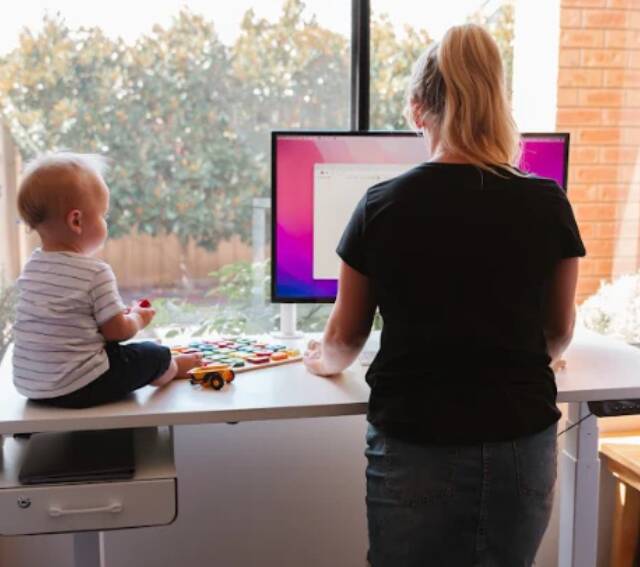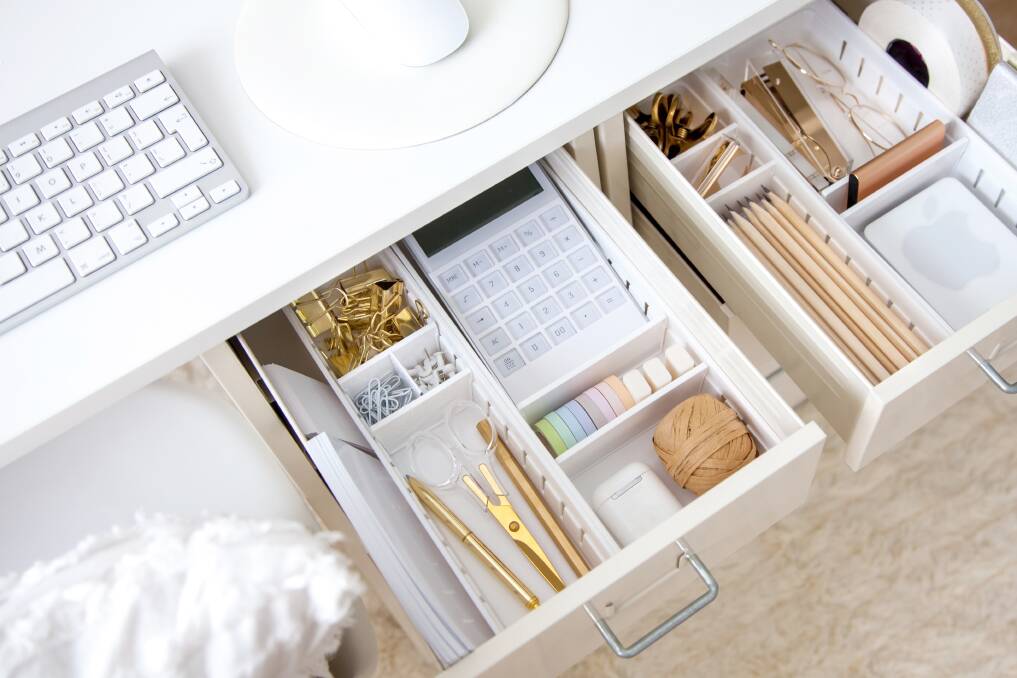Seven genius ways to improve your home office productivity and comfort

This is branded content for ENTR Media.
Creating an efficient and comfortable home office is essential for those who work remotely (particularly after Covid-19). Whether you're self-employed or part of a larger organisation, the environment can significantly impact productivity and well-being.
To enhance one's home office, several straightforward strategies can be adopted to make the space more functional and conducive to work. While the trend of working from home is here to stay, we outlined seven ways you can increase your productivity working from home.
1. Invest in an ergonomic chair and desk setup
First up, investing in ergonomic chairs and standing desks not only helps to maintain good posture, reduce discomfort, but it can enhance your focus and productivity.
A good quality ergonomic chair will provide adjustable seat height, lumbar support, adjustable backrests, and mobility for ease of movement, catering to individual body requirements.
Similarly, sit-stand desks, which complement chairs, should adjust in height for sitting or standing positions, provide ample space for movement, and encourage proper distance from computer screens to prevent eye strain.
Both pieces of office furniture can reduce the negative effects of prolonged sitting, which can get you into a slump.
Professional guidance can help tailor chairs and desks to specific needs, maximising ergonomic benefits and overall well-being to help you work at your best. Companies in Australia, such as UpDown have a wide range of standing desks (and office chairs), but also a comprehensive blog section that outlines many of the benefits of standing desks for your working environment.
2. Position your home office space near windows to maximise natural light
Natural light can't be underestimated. It can significantly enhance your productivity and mood, particularly on those gloomy days.
To best optimise natural sunlight, you can position your desk near a window facing east or west, ensuring indirect sunlight for comfortable luminosity throughout the day.
However, direct sunlight should be avoided on computer screens to prevent glare and eye strain.
Other window treatments, such as blinds or sheer curtains, help diffuse direct sunlight, ensuring soft and even light distribution.
Strategically placed mirrors and warm-coloured desk lamps can further maximise light reflection, brightening the space and creating the illusion of a larger room.
Consider the colours and textures of walls and furniture, as we will discuss below. Opting for lighter hues can enhance light reflection, contributing to a brighter workspace and promoting overall well-being and efficiency when working from home.
3. Keep your workspace clutter-free by implementing organisational solutions
Next up is establishing a clutter-free home office. Embrace minimalism by keeping only the essentials and removing unnecessary items (and rubbish).
Utilise dedicated storage spaces such as shelving units, drawers, and files, ensuring everything has its place and is easily accessible.
To prevent desk pile-ups, use inbox trays for incoming paperwork and filing systems for important documents, which can be cheaply bought on Amazon or from Office Works.
Regular decluttering sessions, whether daily, weekly, or fortnightly, help maintain workspace tidiness.
Manage digital clutter by organising files into folders, tidying up the digital desktop, and archiving old files.
Sharing organisational goals with someone who can offer support and accountability enhances commitment to maintaining a clutter-free space.

4. Upgrade your technology to enhance efficiency and productivity
Technology reigns supreme in today's home office landscape, offering avenues to enhance clear thinking and productivity.
Consider upgrading technological tools to maximise their potential, such as upgrading your wireless router or investing in a wifi extender to boost coverage in your home.
Smart assistants like the Amazon Echo Dot or Google Home Mini streamline daily tasks, providing hands-free convenience and minimising distractions.
You can also get wifi thermostats that allow for personalised room temperature adjustments, improving comfort and work performance, as studies suggest.
5. Personalise with decor elements that inspire creativity and motivation
The office should mirror your personality. Adding elements that resonate with your past experiences can stimulate the mind.
Hang artwork or photographs that evoke joy and bring a sense of warmth to the space.
Other good examples are inspirational quotes strategically placed to serve as daily affirmations, boosting motivation.
Moreover, plants enhance air quality and uplift mood, with options like succulents or snake plants adding a touch of nature to the workspace.
Let's not forget to choose a colour scheme that reflects personal taste and fosters focus, whether it's calming blues and greens or energising warmer shades.
Merge functionality with personal style by incorporating decorative yet practical items like a stylish lamp or a unique pen holder.
Bold accessories such as colourful rugs or striking sculptures inject dynamism into the environment.
Lastly, DIY elements like handmade desk organisers or painted corkboards lend a touch of uniqueness, and personal craftsmanship can lead to a more personal and productive home office.
A great source of inspiration for desk organisation ideas is checking out Pinterest boards.
6. Minimise distractions by managing noise in your home office
Much like having a dark and quiet space to get a real deserved shut-eye, keeping tabs on noise levels in your office is essential for sustaining productivity and minimising distractions.
Thankfully, there are various strategies to create a conducive environment for focus.
Firstly, identify and eliminate noise sources within the home, such as household appliances or outside traffic, and consider relocating the workspace to a quieter area if necessary.
Once you've done this, consider sound-absorbing materials like rugs, bookshelves filled with books, or acoustic panels to diminish sound reverberations and maintain a quieter atmosphere.
You could always buy a pair of noise-cancelling headphones for background noises that can't be removed.
Moreover, you can introduce sound masking, like white noise or ambient sounds, to mask disruptive noises and improve focus.
Several great apps and even YouTube channels specialise in this space.
7. Incorporate regular breaks and movement into your workday to avoid burnout
And finally, take regular breaks throughout the workday. Scientifically, stepping away from the desk intermittently can replenish mental reserves, sharpen focus, and foster creativity.
Therefore, don't be afraid to incorporate breaks into the work routine that follows a simple structure:
- Work for 25 minutes, then take a five-minute break. This rhythm, known as the Pomodoro Technique, optimises concentration and rest.
- Regular movement every couple of hours by stepping outside for a walk or stretch to get the blood flowing.
- Perform simple movement exercises like leg extensions or seated twists right at the desk.
During breaks, stretch, walk, meditate, or doodle to refresh your mind and body. These practices not only contribute to well-being but also enhance overall work performance.


